Periodontal Treatment
Crown Lengthening
Teeth Whitening
Soft Tissue Surgery
Endodontic Procedures
Diode Laser
YAG Laser
CO2 Laser
Nd:YAG Laser
Erbium Laser
Dental Clinics
Hospitals
Research Laboratories
Academic Institutions
Portable
Standalone
Tabletop
Robotic
North America
Europe
South America
Asia Pacific
Middle East and Africa
North America Outlook (USD Billion, 2019-2035)
North America Dental Lasers Market by Application Type
Periodontal Treatment
Crown Lengthening
Teeth Whitening
Soft Tissue Surgery
Endodontic Procedures
North America Dental Lasers Market by Type
Diode Laser
YAG Laser
CO2 Laser
Nd:YAG Laser
Erbium Laser
North America Dental Lasers Market by End Use Type
Dental Clinics
Hospitals
Research Laboratories
Academic Institutions
North America Dental Lasers Market by Configuration Type
Portable
Standalone
Tabletop
Robotic
North America Dental Lasers Market by Regional Type
US
Canada
US Outlook (USD Billion, 2019-2035)
US Dental Lasers Market by Application Type
Periodontal Treatment
Crown Lengthening
Teeth Whitening
Soft Tissue Surgery
Endodontic Procedures
US Dental Lasers Market by Type
Diode Laser
YAG Laser
CO2 Laser
Nd:YAG Laser
Erbium Laser
US Dental Lasers Market by End Use Type
Dental Clinics
Hospitals
Research Laboratories
Academic Institutions
US Dental Lasers Market by Configuration Type
Portable
Standalone
Tabletop
Robotic
CANADA Outlook (USD Billion, 2019-2035)
CANADA Dental Lasers Market by Application Type
Periodontal Treatment
Crown Lengthening
Teeth Whitening
Soft Tissue Surgery
Endodontic Procedures
CANADA Dental Lasers Market by Type
Diode Laser
YAG Laser
CO2 Laser
Nd:YAG Laser
Erbium Laser
CANADA Dental Lasers Market by End Use Type
Dental Clinics
Hospitals
Research Laboratories
Academic Institutions
CANADA Dental Lasers Market by Configuration Type
Portable
Standalone
Tabletop
Robotic
Europe Outlook (USD Billion, 2019-2035)
Europe Dental Lasers Market by Application Type
Periodontal Treatment
Crown Lengthening
Teeth Whitening
Soft Tissue Surgery
Endodontic Procedures
Europe Dental Lasers Market by Type
Diode Laser
YAG Laser
CO2 Laser
Nd:YAG Laser
Erbium Laser
Europe Dental Lasers Market by End Use Type
Dental Clinics
Hospitals
Research Laboratories
Academic Institutions
Europe Dental Lasers Market by Configuration Type
Portable
Standalone
Tabletop
Robotic
Europe Dental Lasers Market by Regional Type
Germany
UK
France
Russia
Italy
Spain
Rest of Europe
GERMANY Outlook (USD Billion, 2019-2035)
GERMANY Dental Lasers Market by Application Type
Periodontal Treatment
Crown Lengthening
Teeth Whitening
Soft Tissue Surgery
Endodontic Procedures
GERMANY Dental Lasers Market by Type
Diode Laser
YAG Laser
CO2 Laser
Nd:YAG Laser
Erbium Laser
GERMANY Dental Lasers Market by End Use Type
Dental Clinics
Hospitals
Research Laboratories
Academic Institutions
GERMANY Dental Lasers Market by Configuration Type
Portable
Standalone
Tabletop
Robotic
UK Outlook (USD Billion, 2019-2035)
UK Dental Lasers Market by Application Type
Periodontal Treatment
Crown Lengthening
Teeth Whitening
Soft Tissue Surgery
Endodontic Procedures
UK Dental Lasers Market by Type
Diode Laser
YAG Laser
CO2 Laser
Nd:YAG Laser
Erbium Laser
UK Dental Lasers Market by End Use Type
Dental Clinics
Hospitals
Research Laboratories
Academic Institutions
UK Dental Lasers Market by Configuration Type
Portable
Standalone
Tabletop
Robotic
FRANCE Outlook (USD Billion, 2019-2035)
FRANCE Dental Lasers Market by Application Type
Periodontal Treatment
Crown Lengthening
Teeth Whitening
Soft Tissue Surgery
Endodontic Procedures
FRANCE Dental Lasers Market by Type
Diode Laser
YAG Laser
CO2 Laser
Nd:YAG Laser
Erbium Laser
FRANCE Dental Lasers Market by End Use Type
Dental Clinics
Hospitals
Research Laboratories
Academic Institutions
FRANCE Dental Lasers Market by Configuration Type
Portable
Standalone
Tabletop
Robotic
RUSSIA Outlook (USD Billion, 2019-2035)
RUSSIA Dental Lasers Market by Application Type
Periodontal Treatment
Crown Lengthening
Teeth Whitening
Soft Tissue Surgery
Endodontic Procedures
RUSSIA Dental Lasers Market by Type
Diode Laser
YAG Laser
CO2 Laser
Nd:YAG Laser
Erbium Laser
RUSSIA Dental Lasers Market by End Use Type
Dental Clinics
Hospitals
Research Laboratories
Academic Institutions
RUSSIA Dental Lasers Market by Configuration Type
Portable
Standalone
Tabletop
Robotic
ITALY Outlook (USD Billion, 2019-2035)
ITALY Dental Lasers Market by Application Type
Periodontal Treatment
Crown Lengthening
Teeth Whitening
Soft Tissue Surgery
Endodontic Procedures
ITALY Dental Lasers Market by Type
Diode Laser
YAG Laser
CO2 Laser
Nd:YAG Laser
Erbium Laser
ITALY Dental Lasers Market by End Use Type
Dental Clinics
Hospitals
Research Laboratories
Academic Institutions
ITALY Dental Lasers Market by Configuration Type
Portable
Standalone
Tabletop
Robotic
SPAIN Outlook (USD Billion, 2019-2035)
SPAIN Dental Lasers Market by Application Type
Periodontal Treatment
Crown Lengthening
Teeth Whitening
Soft Tissue Surgery
Endodontic Procedures
SPAIN Dental Lasers Market by Type
Diode Laser
YAG Laser
CO2 Laser
Nd:YAG Laser
Erbium Laser
SPAIN Dental Lasers Market by End Use Type
Dental Clinics
Hospitals
Research Laboratories
Academic Institutions
SPAIN Dental Lasers Market by Configuration Type
Portable
Standalone
Tabletop
Robotic
REST OF EUROPE Outlook (USD Billion, 2019-2035)
REST OF EUROPE Dental Lasers Market by Application Type
Periodontal Treatment
Crown Lengthening
Teeth Whitening
Soft Tissue Surgery
Endodontic Procedures
REST OF EUROPE Dental Lasers Market by Type
Diode Laser
YAG Laser
CO2 Laser
Nd:YAG Laser
Erbium Laser
REST OF EUROPE Dental Lasers Market by End Use Type
Dental Clinics
Hospitals
Research Laboratories
Academic Institutions
REST OF EUROPE Dental Lasers Market by Configuration Type
Portable
Standalone
Tabletop
Robotic
APAC Outlook (USD Billion, 2019-2035)
APAC Dental Lasers Market by Application Type
Periodontal Treatment
Crown Lengthening
Teeth Whitening
Soft Tissue Surgery
Endodontic Procedures
APAC Dental Lasers Market by Type
Diode Laser
YAG Laser
CO2 Laser
Nd:YAG Laser
Erbium Laser
APAC Dental Lasers Market by End Use Type
Dental Clinics
Hospitals
Research Laboratories
Academic Institutions
APAC Dental Lasers Market by Configuration Type
Portable
Standalone
Tabletop
Robotic
APAC Dental Lasers Market by Regional Type
China
India
Japan
South Korea
Malaysia
Thailand
Indonesia
Rest of APAC
CHINA Outlook (USD Billion, 2019-2035)
CHINA Dental Lasers Market by Application Type
Periodontal Treatment
Crown Lengthening
Teeth Whitening
Soft Tissue Surgery
Endodontic Procedures
CHINA Dental Lasers Market by Type
Diode Laser
YAG Laser
CO2 Laser
Nd:YAG Laser
Erbium Laser
CHINA Dental Lasers Market by End Use Type
Dental Clinics
Hospitals
Research Laboratories
Academic Institutions
CHINA Dental Lasers Market by Configuration Type
Portable
Standalone
Tabletop
Robotic
INDIA Outlook (USD Billion, 2019-2035)
INDIA Dental Lasers Market by Application Type
Periodontal Treatment
Crown Lengthening
Teeth Whitening
Soft Tissue Surgery
Endodontic Procedures
INDIA Dental Lasers Market by Type
Diode Laser
YAG Laser
CO2 Laser
Nd:YAG Laser
Erbium Laser
INDIA Dental Lasers Market by End Use Type
Dental Clinics
Hospitals
Research Laboratories
Academic Institutions
INDIA Dental Lasers Market by Configuration Type
Portable
Standalone
Tabletop
Robotic
JAPAN Outlook (USD Billion, 2019-2035)
JAPAN Dental Lasers Market by Application Type
Periodontal Treatment
Crown Lengthening
Teeth Whitening
Soft Tissue Surgery
Endodontic Procedures
JAPAN Dental Lasers Market by Type
Diode Laser
YAG Laser
CO2 Laser
Nd:YAG Laser
Erbium Laser
JAPAN Dental Lasers Market by End Use Type
Dental Clinics
Hospitals
Research Laboratories
Academic Institutions
JAPAN Dental Lasers Market by Configuration Type
Portable
Standalone
Tabletop
Robotic
SOUTH KOREA Outlook (USD Billion, 2019-2035)
SOUTH KOREA Dental Lasers Market by Application Type
Periodontal Treatment
Crown Lengthening
Teeth Whitening
Soft Tissue Surgery
Endodontic Procedures
SOUTH KOREA Dental Lasers Market by Type
Diode Laser
YAG Laser
CO2 Laser
Nd:YAG Laser
Erbium Laser
SOUTH KOREA Dental Lasers Market by End Use Type
Dental Clinics
Hospitals
Research Laboratories
Academic Institutions
SOUTH KOREA Dental Lasers Market by Configuration Type
Portable
Standalone
Tabletop
Robotic
MALAYSIA Outlook (USD Billion, 2019-2035)
MALAYSIA Dental Lasers Market by Application Type
Periodontal Treatment
Crown Lengthening
Teeth Whitening
Soft Tissue Surgery
Endodontic Procedures
MALAYSIA Dental Lasers Market by Type
Diode Laser
YAG Laser
CO2 Laser
Nd:YAG Laser
Erbium Laser
MALAYSIA Dental Lasers Market by End Use Type
Dental Clinics
Hospitals
Research Laboratories
Academic Institutions
MALAYSIA Dental Lasers Market by Configuration Type
Portable
Standalone
Tabletop
Robotic
THAILAND Outlook (USD Billion, 2019-2035)
THAILAND Dental Lasers Market by Application Type
Periodontal Treatment
Crown Lengthening
Teeth Whitening
Soft Tissue Surgery
Endodontic Procedures
THAILAND Dental Lasers Market by Type
Diode Laser
YAG Laser
CO2 Laser
Nd:YAG Laser
Erbium Laser
THAILAND Dental Lasers Market by End Use Type
Dental Clinics
Hospitals
Research Laboratories
Academic Institutions
THAILAND Dental Lasers Market by Configuration Type
Portable
Standalone
Tabletop
Robotic
INDONESIA Outlook (USD Billion, 2019-2035)
INDONESIA Dental Lasers Market by Application Type
Periodontal Treatment
Crown Lengthening
Teeth Whitening
Soft Tissue Surgery
Endodontic Procedures
INDONESIA Dental Lasers Market by Type
Diode Laser
YAG Laser
CO2 Laser
Nd:YAG Laser
Erbium Laser
INDONESIA Dental Lasers Market by End Use Type
Dental Clinics
Hospitals
Research Laboratories
Academic Institutions
INDONESIA Dental Lasers Market by Configuration Type
Portable
Standalone
Tabletop
Robotic
REST OF APAC Outlook (USD Billion, 2019-2035)
REST OF APAC Dental Lasers Market by Application Type
Periodontal Treatment
Crown Lengthening
Teeth Whitening
Soft Tissue Surgery
Endodontic Procedures
REST OF APAC Dental Lasers Market by Type
Diode Laser
YAG Laser
CO2 Laser
Nd:YAG Laser
Erbium Laser
REST OF APAC Dental Lasers Market by End Use Type
Dental Clinics
Hospitals
Research Laboratories
Academic Institutions
REST OF APAC Dental Lasers Market by Configuration Type
Portable
Standalone
Tabletop
Robotic
South America Outlook (USD Billion, 2019-2035)
South America Dental Lasers Market by Application Type
Periodontal Treatment
Crown Lengthening
Teeth Whitening
Soft Tissue Surgery
Endodontic Procedures
South America Dental Lasers Market by Type
Diode Laser
YAG Laser
CO2 Laser
Nd:YAG Laser
Erbium Laser
South America Dental Lasers Market by End Use Type
Dental Clinics
Hospitals
Research Laboratories
Academic Institutions
South America Dental Lasers Market by Configuration Type
Portable
Standalone
Tabletop
Robotic
South America Dental Lasers Market by Regional Type
Brazil
Mexico
Argentina
Rest of South America
BRAZIL Outlook (USD Billion, 2019-2035)
BRAZIL Dental Lasers Market by Application Type
Periodontal Treatment
Crown Lengthening
Teeth Whitening
Soft Tissue Surgery
Endodontic Procedures
BRAZIL Dental Lasers Market by Type
Diode Laser
YAG Laser
CO2 Laser
Nd:YAG Laser
Erbium Laser
BRAZIL Dental Lasers Market by End Use Type
Dental Clinics
Hospitals
Research Laboratories
Academic Institutions
BRAZIL Dental Lasers Market by Configuration Type
Portable
Standalone
Tabletop
Robotic
MEXICO Outlook (USD Billion, 2019-2035)
MEXICO Dental Lasers Market by Application Type
Periodontal Treatment
Crown Lengthening
Teeth Whitening
Soft Tissue Surgery
Endodontic Procedures
MEXICO Dental Lasers Market by Type
Diode Laser
YAG Laser
CO2 Laser
Nd:YAG Laser
Erbium Laser
MEXICO Dental Lasers Market by End Use Type
Dental Clinics
Hospitals
Research Laboratories
Academic Institutions
MEXICO Dental Lasers Market by Configuration Type
Portable
Standalone
Tabletop
Robotic
ARGENTINA Outlook (USD Billion, 2019-2035)
ARGENTINA Dental Lasers Market by Application Type
Periodontal Treatment
Crown Lengthening
Teeth Whitening
Soft Tissue Surgery
Endodontic Procedures
ARGENTINA Dental Lasers Market by Type
Diode Laser
YAG Laser
CO2 Laser
Nd:YAG Laser
Erbium Laser
ARGENTINA Dental Lasers Market by End Use Type
Dental Clinics
Hospitals
Research Laboratories
Academic Institutions
ARGENTINA Dental Lasers Market by Configuration Type
Portable
Standalone
Tabletop
Robotic
REST OF SOUTH AMERICA Outlook (USD Billion, 2019-2035)
REST OF SOUTH AMERICA Dental Lasers Market by Application Type
Periodontal Treatment
Crown Lengthening
Teeth Whitening
Soft Tissue Surgery
Endodontic Procedures
REST OF SOUTH AMERICA Dental Lasers Market by Type
Diode Laser
YAG Laser
CO2 Laser
Nd:YAG Laser
Erbium Laser
REST OF SOUTH AMERICA Dental Lasers Market by End Use Type
Dental Clinics
Hospitals
Research Laboratories
Academic Institutions
REST OF SOUTH AMERICA Dental Lasers Market by Configuration Type
Portable
Standalone
Tabletop
Robotic
MEA Outlook (USD Billion, 2019-2035)
MEA Dental Lasers Market by Application Type
Periodontal Treatment
Crown Lengthening
Teeth Whitening
Soft Tissue Surgery
Endodontic Procedures
MEA Dental Lasers Market by Type
Diode Laser
YAG Laser
CO2 Laser
Nd:YAG Laser
Erbium Laser
MEA Dental Lasers Market by End Use Type
Dental Clinics
Hospitals
Research Laboratories
Academic Institutions
MEA Dental Lasers Market by Configuration Type
Portable
Standalone
Tabletop
Robotic
MEA Dental Lasers Market by Regional Type
GCC Countries
South Africa
Rest of MEA
GCC COUNTRIES Outlook (USD Billion, 2019-2035)
GCC COUNTRIES Dental Lasers Market by Application Type
Periodontal Treatment
Crown Lengthening
Teeth Whitening
Soft Tissue Surgery
Endodontic Procedures
GCC COUNTRIES Dental Lasers Market by Type
Diode Laser
YAG Laser
CO2 Laser
Nd:YAG Laser
Erbium Laser
GCC COUNTRIES Dental Lasers Market by End Use Type
Dental Clinics
Hospitals
Research Laboratories
Academic Institutions
GCC COUNTRIES Dental Lasers Market by Configuration Type
Portable
Standalone
Tabletop
Robotic
SOUTH AFRICA Outlook (USD Billion, 2019-2035)
SOUTH AFRICA Dental Lasers Market by Application Type
Periodontal Treatment
Crown Lengthening
Teeth Whitening
Soft Tissue Surgery
Endodontic Procedures
SOUTH AFRICA Dental Lasers Market by Type
Diode Laser
YAG Laser
CO2 Laser
Nd:YAG Laser
Erbium Laser
SOUTH AFRICA Dental Lasers Market by End Use Type
Dental Clinics
Hospitals
Research Laboratories
Academic Institutions
SOUTH AFRICA Dental Lasers Market by Configuration Type
Portable
Standalone
Tabletop
Robotic
REST OF MEA Outlook (USD Billion, 2019-2035)
REST OF MEA Dental Lasers Market by Application Type
Periodontal Treatment
Crown Lengthening
Teeth Whitening
Soft Tissue Surgery
Endodontic Procedures
REST OF MEA Dental Lasers Market by Type
Diode Laser
YAG Laser
CO2 Laser
Nd:YAG Laser
Erbium Laser
REST OF MEA Dental Lasers Market by End Use Type
Dental Clinics
Hospitals
Research Laboratories
Academic Institutions
REST OF MEA Dental Lasers Market by Configuration Type
Portable
Standalone
Tabletop
Robotic
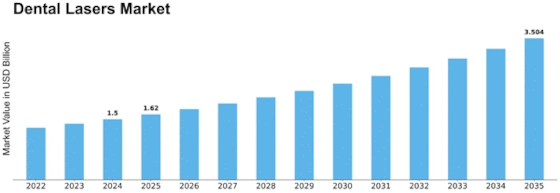

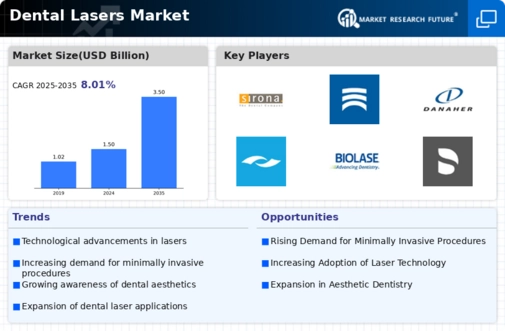
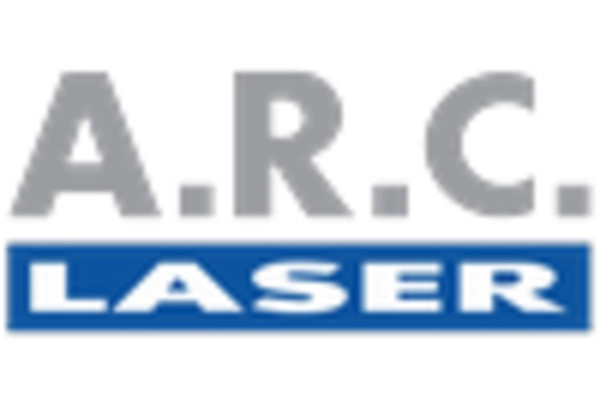
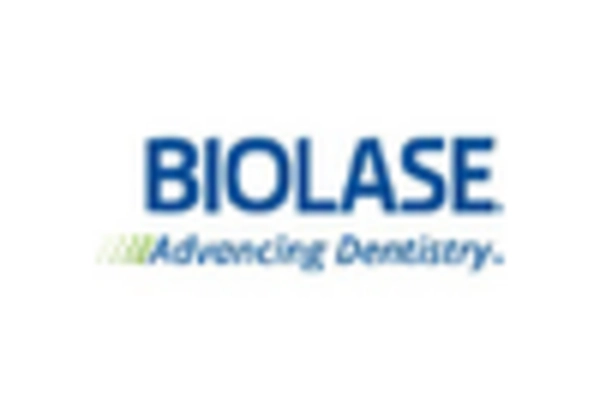


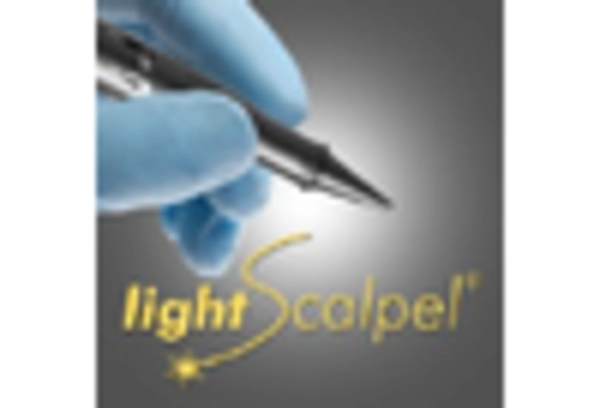










Leave a Comment